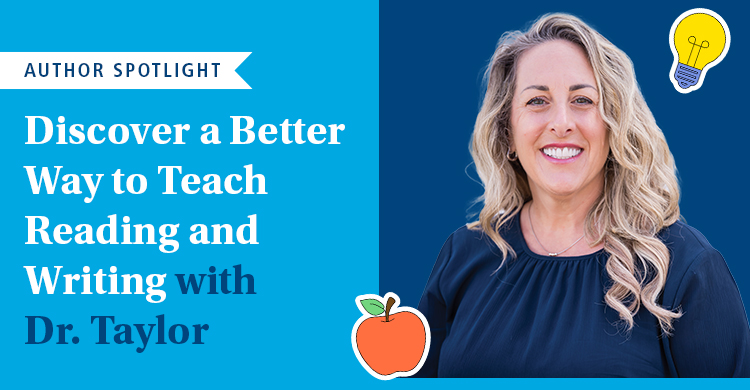Increasing student motivation and dealing with behavior problems has been at or near the top of classroom concerns expressed by educators throughout my 40-plus-year career. As children slowly return to in-person learning, the problem is likely to become more apparent than ever from the effects of the pandemic, but in order to reach successful outcomes we must first examine why some students act like they don’t care. Enthusiasm to explore and learn is palpable through kindergarten and the early school grades, yet little by little the excitement wanes until more than half of all students in grades 5-12 are reportedly either not engaged or actively disengaged in school (Gallup, 2016). An Education Week survey found that only 40 percent of participating teachers and administrators thought that most of their students were highly motivated. The percentage was far less among educators in high-poverty schools (Collier, 2015).
What happens to change the eager kindergartner into a cynical and disengaged teen? Is this downward spiral inevitable? Since it is natural for humans to want to learn and explore—and if school is a place that facilitates learning and exploration—why do many students develop a negative attitude during their school careers, with some getting so disillusioned that they seem not to care at all?
Motivational challenges and strategies
Since the desire to explore is intrinsically motivating, the challenge we face as educators is to identify and eliminate the obstacles that get in the way. By far, unfulfilled basic needs are at the core of virtually all behavior problems. Physical needs for food, shelter and safety are obvious. Psychological needs for attention, connection, competence, control, and joy also seek fulfillment. When any of these needs is unsatisfied, some students act out; some become depressed or filled with anxiety; some give up. Given the increase in child visits to emergency rooms for mental health issues during the pandemic (Leeb et al. 2020), there is likely to be a corresponding uptick in challenging behaviors as students return to school. Literally overnight kids lost contact with their teachers, friends, playgrounds, celebrations, after-school activities, and grandparents. Some have had no respite from witnessing or experiencing some form of abuse. I have had teachers express concerns about students who are either irregularly attending class or have completely stopped coming. Addressing our students’ heightened social-emotional needs must be a priority. In Motivating Students Who Don’t Care, Second Edition, we explore three other issues that are often triggers for student disengagement and offer strategies for addressing each.
Social-emotional factors—Some students shut down to school because they feel disconnected and see being unproductive as a pathway toward acceptance. Others are focused on more basic needs like having a roof over their heads, getting enough to eat and/or feeling safe at home or in the neighborhood. Unless school becomes a welcome distraction from these concerns or provides support to cope with these out-of-school issues, there may be too little mental energy available to handle the challenges of school. Our kids need courageous teachers who are unafraid of making themselves vulnerable by genuinely sharing their thoughts and feelings and listening to their students.
SUGGESTIONS:
- Kids withdraw when they think nobody cares. During a private moment, say something like:
‘I am concerned when I see you with your head on your desk when you are here (not online during the lesson). To me, it looks like there are other things on your mind that are making it hard for you to really be here. I think it is important for you to talk about those things and for me to understand. What’s going on?’
- Use a two-minute intervention – For a few weeks, take approximately two minutes each day to build a relationship with a student who seems preoccupied or disconnected. Make this a time to discover the student’s interests, ideas and concerns. Share things about yourself that might make you more approachable to the student. A few good openers are: “What do you like to do when you are not in school?” “How do you think I could make our class more (interesting; enjoyable; useful)?”
- Get and stay personally connected without taking offensive behavior personally. Rather than being quick to go to a consequence, think first about connecting with the student. Do a lot of active listening (i.e., “Wow, using those words tells me you are very frustrated and upset. I really want to understand what’s going on. I’ll be right here after class and we will figure this out.”) Don’t get hooked into a power struggle by saying things like, “What did you say?” You already heard it once; don’t ask for a repeat. Instead, follow up later with the student privately to explore in more depth and to possibly discuss consequences if needed.
Lack of perceived success – Some students find learning difficult and may resist working to hide feelings of inadequacy. Many students with an “I don’t care” exterior are actually afraid to care because they don’t believe they can succeed. Since they fear being viewed as “stupid” by their peers or the teacher, they instead either act either “bad” or “indifferent.” Others lack confidence that they will not be able to sustain success so they may stop trying. Students who lagged behind before the pandemic are likely to be even further behind and may resort even more frequently to these forms of coping. Post-pandemic may be a good time for a reset of what it means to be successful. My personal and professional experience convinces me that we must refrain from comparing students to each other and rather focus on defining success as improvement within each individual. When it comes to school achievement, “getting better at” should be the standard by which we judge rather than “being as good as or better than.”
SUGGESTIONS:
- Make it hard for kids to fail: Build an “APPPP” for success (Appear (show up) – Prepare (be ready with attitude and supplies) – Practice (work at getting better at learning)- Persist (keep at it or ask for help) – Progress – (demonstrate steady growth). A sixth-grade student who is reading at a second-grade level at the beginning of the school year and progresses to fourth-grade level should be lauded for her improvement even though she remains two grades behind. This is much more realistic when each student’s evaluation is based on how s/he does in comparison to self rather than to whether s/he has achieved a group-based standard. Some schools have handled this dilemma by presenting two grades: one for achieving mastery at grade level and another that reports individual progress.
- Let students know they can always choose to show progress and improve their grades by using any of the 3R’s (Redo-Retake-Revise).
- Modify “honor roll” to a daily or weekly “on-a-roll’ that recognizes effort and improvement.
Boredom/Lack of interest & enthusiasm – Students may become bored if they see no connection between the information and their experience. In later grades, it is not unusual for many to ask, “When will we ever use this?” In actuality, most of what we teach will never be used by most students and quickly forgotten after the test.
SUGGESTIONS:
- Triggering curiosity and interest can motivate even the most unmotivated students. Teachers can blend real-world events that students are experiencing or are aware of with academic curricula. Some topics that grab students’ attention are natural disasters, food, money, and sports. A few examples: Patrick Mahomes, KC Chiefs quarterback, has a contract paying him 450 million dollars for 10 years. There are 16 regular season games each season and 2 exhibition games. How much will he make for each game?; Which pandemic do you think was worse and why: COVID-19 or the 1918 flu?
- Use their media. When she realized that several students were coming online late or not at all, a middle-school math teacher shared how she dramatically improved attendance by starting each virtual class playing the Fortnite video game and tied components of the game into her lessons.
- Throughout lessons, use language to arouse student interest. For example:
- “This is going to be a great lesson because . . .”
- “Here’s a really cool fact that not too many people know . . .”
- “I am pumped to get at today’s lesson because . . .”
- “I love this topic because . . .”
Need to feel in control – Some students are entirely competent and capable, but their need to be in control is so strong that they employ a self-defeating strategy to express their independence by acting oppositional. They won’t produce. These are often kids who do well enough on tests but won’t ever do their homework. Since they know that parents and teachers get very frustrated when they put forth little effort, they may use this strategy to feel empowered.
SUGGESTIONS
- Involve students in classroom decisions such as developing rules and consequences. Look for opportunities to put them in charge (i.e., helping others or having a high-status classroom job).
- Turn things around by owning the problem. For example, “I know I hassle you a lot about not doing your work and I’ll probably keep doing that because I respect you too much to expect anything less than your best. I want to be a good teacher for you, and when you don’t produce it makes it impossible for me to know if I am. If you get all four of these problems done, that would be awesome but I can live with any two of the four. Your choice.”
Going Forward
We can help our students get or stay motivated by conveying an attitude of genuineness and optimism. Let them know you love being their teacher and how excited you are whenever you think about being together at the same time with all of them. Don’t fear bringing real-world issues of the day into the classroom Finally, recognize that a great deal of patience is needed to facilitate change in students who are either unmotivated or behaviorally challenging. Change is like a roller coaster ride: every climb to the top leads to a drop. So buckle up and never give up!
- Gallup. (2016). 2016 Gallup student poll: A snapshot of results and findings. Retrieved from www.sac.edu/research/PublishingImages/Pages/research-studies/2016%20Gallup%20Student%20Poll%20Snapshot%20Report%20Final.pdf. September 30, 2020.
- Collier, L. (2015, June). Grabbing students. American Psychological Association Monitor, 46(6), 58. Retrieved from www.apa.org/monitor/2015/06/grabbing-students. September 30, 2020.
- Leeb, R.T., Bitsko, R.H, Radhakrishnan, L., Martinez, P., Njai, R., & Holland, K.M. (2020, November). Mental health-related emergency department visits among children aged <18 years during the COVID-19 pandemic—United States, January 1-October 17, 2020. Morbidity and Mortality Weekly Report, 69(45), 1675-1680. Retrieved from www.cdc.gov/mmwr/volumes/69/wr/mm6945a3.htm?s_cid=mm6945a3_w. January 18, 2021.
- Mendler, A. (2021). Motivating students who don’t care (second ed.). Bloomington IN: Solution Tree.






